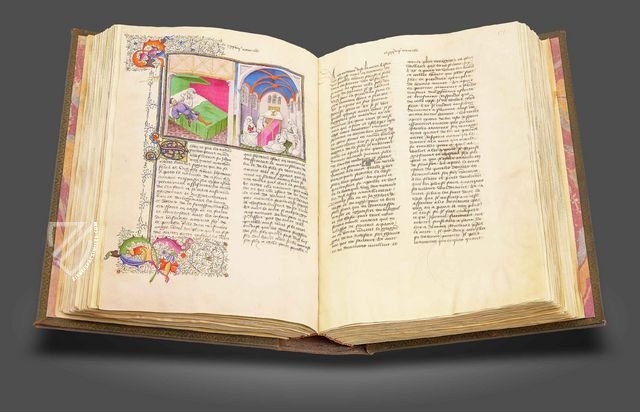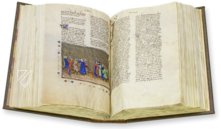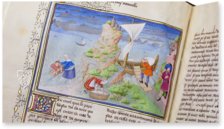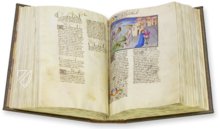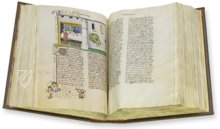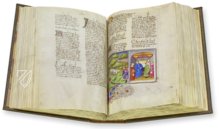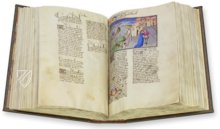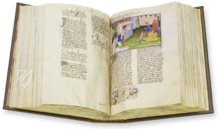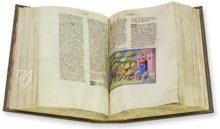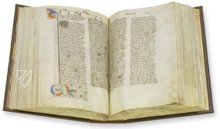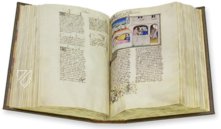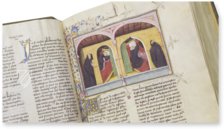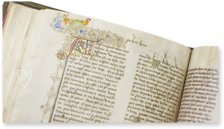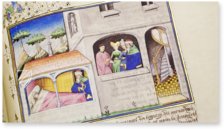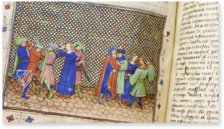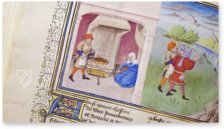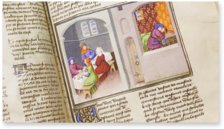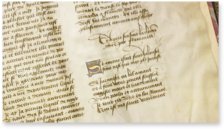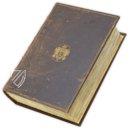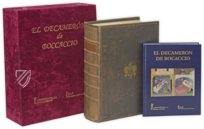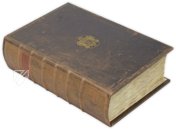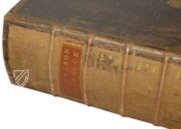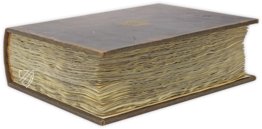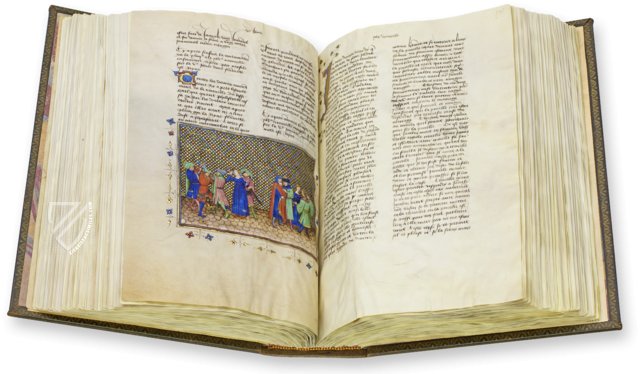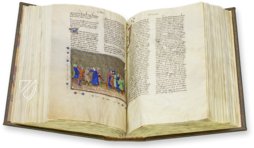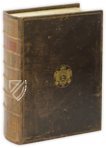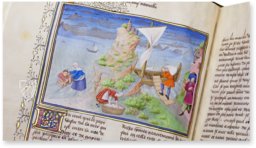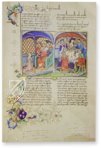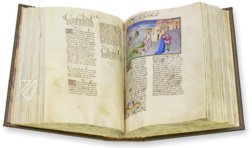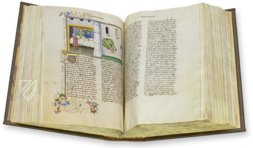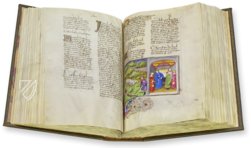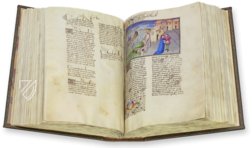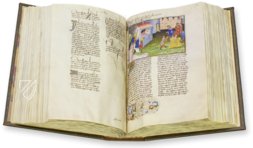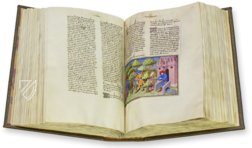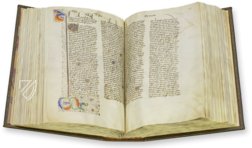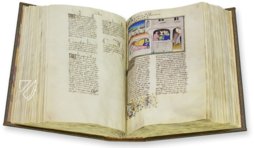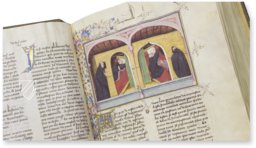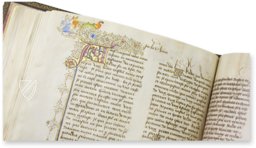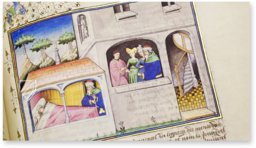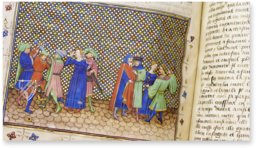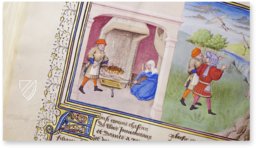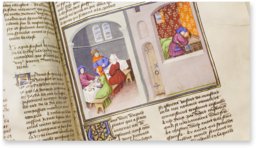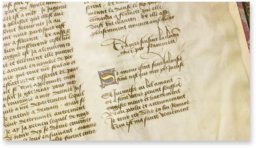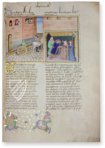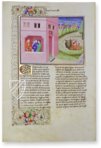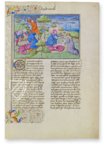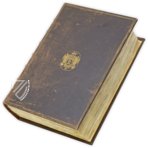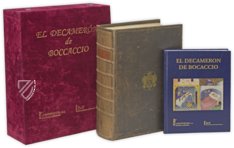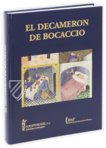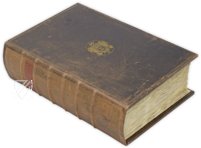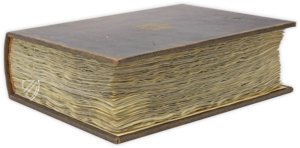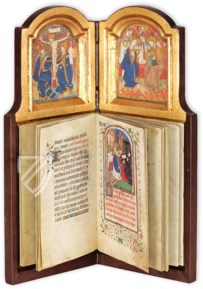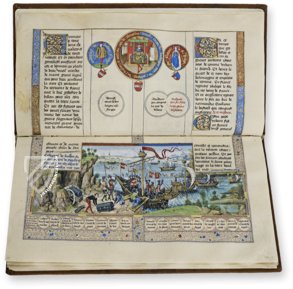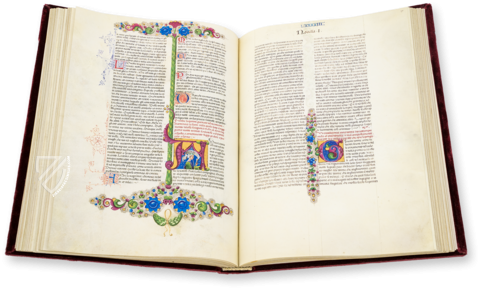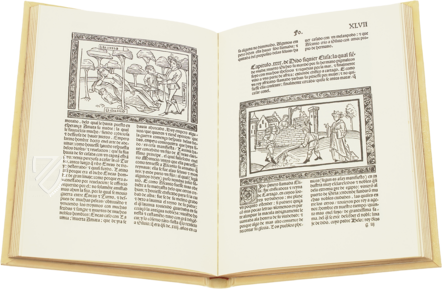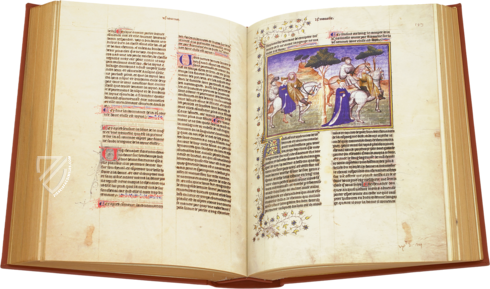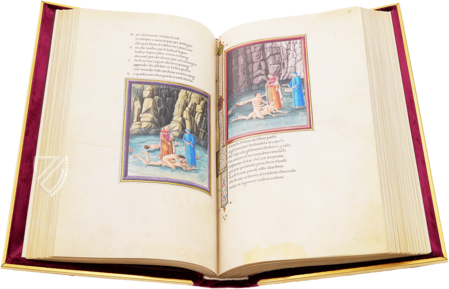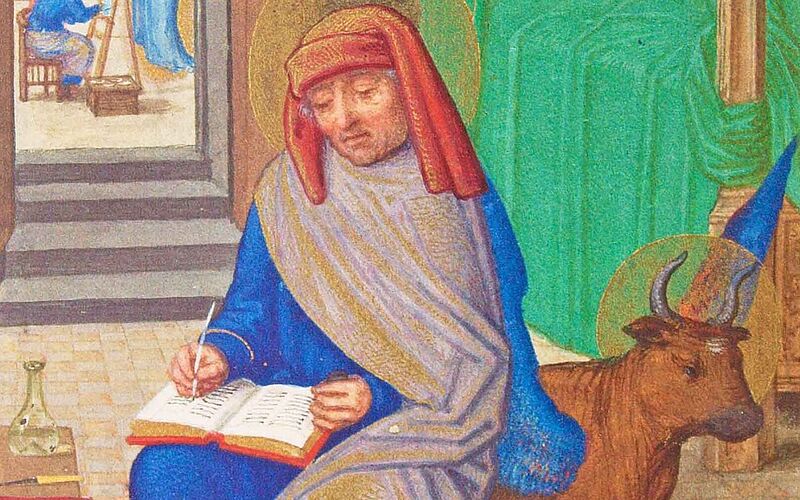Boccaccio's Decameron - Codex Paris
(3,000€ - 7,000€)
One of the most important works of world literature in one of the most marvelous manuscripts of the 15th century: the famous collection of novellas in Giovanni Boccacio’s Decameron from the mid–14th century was translated into French by Laurent de Premierfait and illustrated with wonderful miniatures. The presumed commissioner of the work was Philipp the Good, Duke of Burgundy, a lover of splendid manuscripts. Guillebert de Mets copied the French text into the wonderful manuscript and his famous miniaturists, the Master of Guillebert de Mets and the Master of Mansel, marvelously designed it. The miniatures belong among the most beautiful Flemish works of art from that golden age of illumination and makes the French edition of Boccaccio’s Decameron a true treasure for the lover of splendid manuscripts.
Boccaccio's Decameron
One of the most important works of world literature in one of the most marvelous manuscripts of the 15th century: the famous collection of novellas of Giovanni Boccacio’s Decameron from the mid–14th century was translated into French by **Laurent de Premierfait and illustrated with wonderful miniatures. The presumed commissioner of the work was Philip the Good, Duke of Burgundy, a lover of splendid manuscripts. Guillebert de Metscopied the French text into the wonderful manuscript and his famous miniaturists, the Master of Guillebert de Mets and the Master of Mansel, marvelously designed it. The miniatures belong among the most beautiful Flemish works of art from that golden age of illumination and makes the French edition of Boccaccio’s Decameron a true treasure for the lover of splendid manuscripts.
Great Flemish Illumination
Splendid, ornamental bordures frame the 790 pages of the manuscript, the text’s voluptuous, gorgeous, and consistent script in red and black ink adorns the entire work. Numerous decorative initials, colored and embellished with gold, enliven the text. Also, the magnificent miniatures at the beginning of each of the 100 stories speak for themselves in their outstanding artistic quality and captivating originality. Always found in the upper-half of the picture is a figurative scene that illustrates the text. In wonderfully spatial scenes, delicate, elongated figures with flowing garments perform with expressive facial features and gestures. The miniatures are surrounded by exuberant filigree borders of ornamental arabesques. These bordures of impressive originality are a characteristic of the great art of the masters of Guillebert de Mets.
Two Masters of Their Trade
The marvelous miniatures and the artistic embellishment of the manuscript originate from the Master of Guillebert de Mets and the Master of Mansel. Both were probably active in Ghent. Clear influences of their Flemish provenance are to be found in their works. However, influences of French and particularly Parisian illumination are also clear. Both have been immortalized in numerous high-quality works from their hand. That the miniaturists of the French Boccaccio manuscript were of Flemish origins is evidenced by the fact that on some pages in the manuscript, the explanations of the pictorial subjects are written in Flemish. The scribe of the text was Guillebert de Mets, as is noted in the book’s colophon. Guillebert of Mets was the scribe and copyist and was active as a librarian for Philip the Good among others.
The First French Translation of the Literary Masterpiece
The French text of the Decameron by Boccaccio came from Laurent de Premierfait, a humanist poet and translator. Premierfait was counted among the best translators of his day, he translated works from Aristotle, Seneca, and Cicero and was employed by King Charles VIII and Jean Duc de Berry. He translated the Decameron into French, as is noted in the manuscript, from 1411 to the 15th of June, 1414. The splendid manuscript with his translation was made in the years 1445–50, probably for Philip the Good (1396–1467), Duke of Burgundy. It remained in the library of the Dukes of Burgundy until 1748. It was then purchased by the Duke of Argenson, who in turn gave it to his nephew, the Marguis de Paulmy, whose coat of arms is depicted on the binding.
A Masterpiece of World Literature
Giovanni Boccaccio’s (1313–1375) famous collection of novellas has been regarded as a masterpiece since the Renaissance. The Decameron – roughly translated as “ten-day-work”, originated in the mid–14th century. The magnum opus of the Italian humanist poet had an influence on European- and world-literature that is impossible to overstate. It was received and imitated by significant authors, e.g. Geoffrey Chaucer, Miguel de Cervantes, Goethe, Shakespeare, and Balzac. The Decameron belongs to the canon of – Italian – literature to this day. The collection of novellas consists of 100 stories that, according to the framework plot, are told over the course of ten days by a group consisting of seven women and three men. The group has fled from Florence, where the Plague was raging. Boccaccio gives a wonderful glimpse into the society of the 14th century. With his simultaneously entertaining and informative Decameron, he became “the founder of the prosaic narrative tradition in Europe.”
Codicology
- Alternative Titles
- El Decamerón de Boccaccio
Arsenal Decameron
Decameron de Bocaccio
Boccaccios Decamerone
Boccaccios Dekameron - Size / Format
- 790 pages / 40.0 × 28.5 cm
- Origin
- France
- Date
- 1445–1450
- Epochs
- Style
- Genre
- Language
- Illustrations
- A framed double scene at the beginning of each one of the 100 stories and numerous decorated initials
- Content
- French translation of the Decameron by Boccaccio, preceded by three tables: Table des nouvelles, Table des choses remarquables, Table des chansons
- Patron
- Philip the Good (1396–1467), Duke of Burgundy
- Artist / School
- Giovanni Boccaccio (the Tuscan Italian of the original was translated into French by Laurent de Premierfait, from 1411 to 15 June, 1414) (author)
Master of Guillebert de Mets and the Master of Mansel (illuminator)
Guillebert de Mets (scribe) - Previous Owners
- Bourgogne Library in Bruxelles (Belgium)
Count d´Argenson
Marquis de Paulmy
Boccaccio's Decameron - Codex Paris
Master Simone, Bruno, and Buffalmacco
The 9th tale of the 10th day tells how the tricksters Bruno and Buffalmacco play a practical joke on the physician Master Simone by leaving him in a stinking pit. This story was a vehicle for Boccaccio to try out some wordplay, but was also the subject for this fine miniature by the Master of Jean Mansel, who made excellent use of color, space, and perspective in creating this two-part scene. The urine flask over the door indicates that the building is the home of a physician.
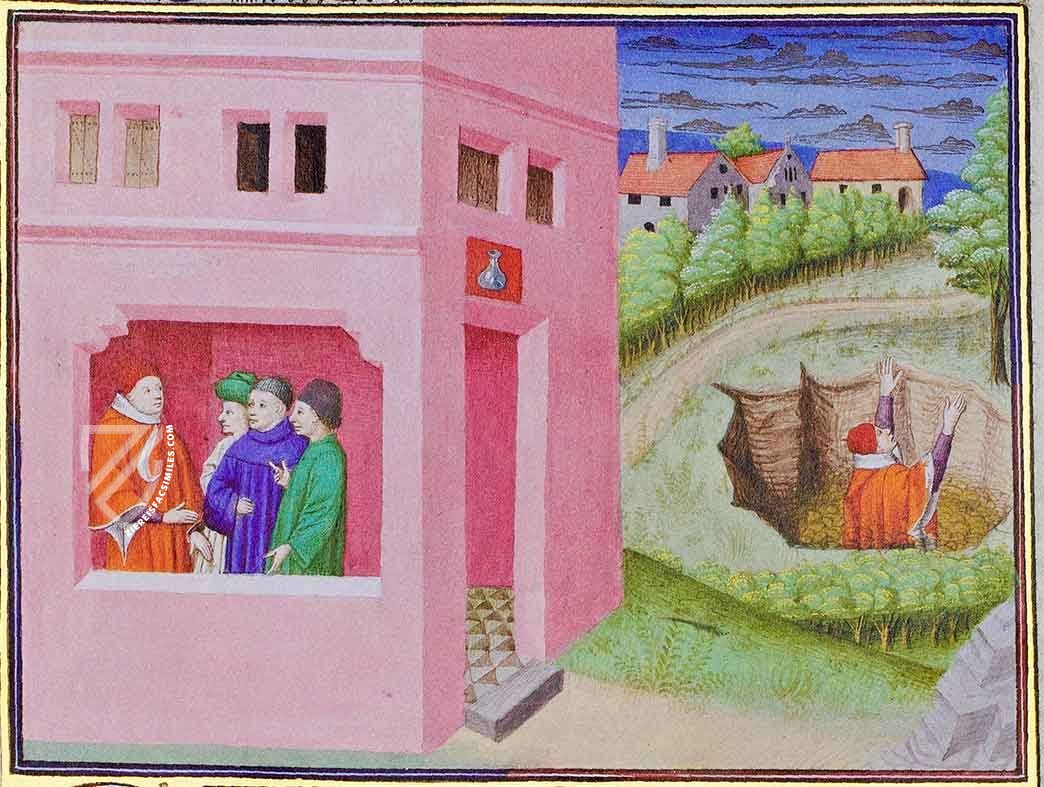
Boccaccio's Decameron - Codex Paris
Gillette of Narbonne before the King
Within this frame narrative of young nobles telling stories to one another while hiding from the Plague as it ravages Florence, the ninth tale told on day three concerns Gillette of Narbonne and the King of France. Based on a Sanskrit work originating in 5th century India, the tale later became the basis for the play All’s Well That Ends Well by William Shakespeare.
This miniature is a wonderful glimpse of court life in the 15th century, which is depicted under vaulted ceilings before meticulously patterned backgrounds. While an aristocratic family dines on the right, a young lady is being presented at court on the left. She is pictured wearing a garland and kneeling before the King, who wields a scepter and is flanked by advisors.
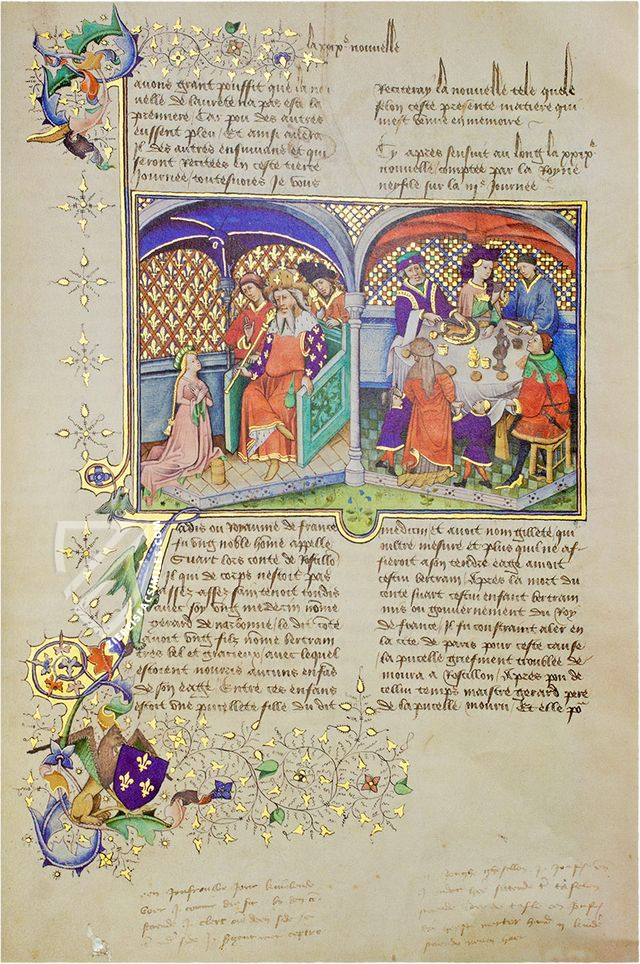
#1 El Decamerón de Boccaccio
Languages: English (abstract), Spanish
(3,000€ - 7,000€)
- Treatises / Secular Books
- Apocalypses / Beatus
- Astronomy / Astrology
- Bestiaries
- Bibles / Gospels
- Chronicles / History / Law
- Geography / Maps
- Saints' Lives
- Islam / Oriental
- Judaism / Hebrew
- Single Leaf Collections
- Leonardo da Vinci
- Literature / Poetry
- Liturgical Manuscripts
- Medicine / Botany / Alchemy
- Music
- Mythology / Prophecies
- Psalters
- Other Religious Books
- Games / Hunting
- Private Devotion Books
- Other Genres
- Afghanistan
- Armenia
- Austria
- Belgium
- Belize
- Bosnia and Herzegovina
- China
- Colombia
- Costa Rica
- Croatia
- Cyprus
- Czech Republic
- Denmark
- Egypt
- El Salvador
- Ethiopia
- France
- Germany
- Greece
- Guatemala
- Honduras
- Hungary
- India
- Iran
- Iraq
- Israel
- Italy
- Japan
- Jordan
- Kazakhstan
- Kyrgyzstan
- Lebanon
- Liechtenstein
- Luxembourg
- Mexico
- Morocco
- Netherlands
- Palestine
- Panama
- Peru
- Poland
- Portugal
- Romania
- Russia
- Serbia
- Spain
- Sri Lanka
- Sweden
- Switzerland
- Syria
- Tajikistan
- Turkey
- Turkmenistan
- Ukraine
- United Kingdom
- United States
- Uzbekistan
- Vatican City
- A. Oosthoek, van Holkema & Warendorf
- Aboca Museum
- Ajuntament de Valencia
- Akademie Verlag
- Akademische Druck- u. Verlagsanstalt (ADEVA)
- Aldo Ausilio Editore - Bottega d’Erasmo
- Alecto Historical Editions
- Alkuin Verlag
- Almqvist & Wiksell
- Amilcare Pizzi
- Andreas & Andreas Verlagsbuchhandlung
- Archa 90
- Archiv Verlag
- Archivi Edizioni
- Arnold Verlag
- ARS
- Ars Magna
- ArtCodex
- AyN Ediciones
- Azimuth Editions
- Badenia Verlag
- Bärenreiter-Verlag
- Belser Verlag
- Belser Verlag / WK Wertkontor
- Benziger Verlag
- Bernardinum Wydawnictwo
- BiblioGemma
- Biblioteca Apostolica Vaticana (Vaticanstadt, Vaticanstadt)
- Bibliotheca Palatina Faksimile Verlag
- Bibliotheca Rara
- Boydell & Brewer
- Bramante Edizioni
- Bredius Genootschap
- Brepols Publishers
- British Library
- C. Weckesser
- Caixa Catalunya
- Canesi
- CAPSA, Ars Scriptoria
- Caratzas Brothers, Publishers
- Carus Verlag
- Casamassima Libri
- Centrum Cartographie Verlag GmbH
- Chavane Verlag
- Christian Brandstätter Verlag
- Circulo Cientifico
- Club Bibliófilo Versol
- Club du Livre
- CM Editores
- Collegium Graphicum
- Collezione Apocrifa Da Vinci
- Comissão Nacional para as Comemorações dos Descobrimentos Portugueses
- Coron Verlag
- Corvina
- CTHS
- D. S. Brewer
- Damon
- De Agostini/UTET
- De Nederlandsche Boekhandel
- De Schutter
- Deuschle & Stemmle
- Deutscher Verlag für Kunstwissenschaft
- DIAMM
- Droz
- E. Schreiber Graphische Kunstanstalten
- Ediciones Boreal
- Ediciones Grial
- Ediclube
- Edições Inapa
- Edilan
- Editalia
- Edition Deuschle
- Edition Georg Popp
- Edition Leipzig
- Edition Libri Illustri
- Editiones Reales Sitios S. L.
- Éditions de l'Oiseau Lyre
- Editions Medicina Rara
- Editorial Casariego
- Editorial Mintzoa
- Editrice Antenore
- Editrice Velar
- Edizioni Edison
- Egeria, S.L.
- Eikon Editores
- Electa
- Emery Walker Limited
- Enciclopèdia Catalana
- Eos-Verlag
- Ephesus Publishing
- Ernst Battenberg
- Eugrammia Press
- Extraordinary Editions
- Fackelverlag
- Facsimila Art & Edition
- Facsimile Editions Ltd.
- Facsimilia Art & Edition Ebert KG
- Faksimile Verlag
- Feuermann Verlag
- Folger Shakespeare Library
- Franco Cosimo Panini Editore
- Friedrich Wittig Verlag
- Fundación Hullera Vasco-Leonesa
- G. Braziller
- Gabriele Mazzotta Editore
- Gebr. Mann Verlag
- Gesellschaft für graphische Industrie
- Getty Research Institute
- Giovanni Domenico de Rossi
- Giunti Editore
- Graffiti
- Grafica European Center of Fine Arts
- Guido Pressler
- Guillermo Blazquez
- Gustav Kiepenheuer
- H. N. Abrams
- Harrassowitz
- Harvard University Press
- Helikon
- Hendrickson Publishers
- Henning Oppermann
- Herder Verlag
- Hes & De Graaf Publishers
- Hoepli
- Holbein-Verlag
- Houghton Library
- Hugo Schmidt Verlag
- Idion Verlag
- Il Bulino, edizioni d'arte
- ILte
- Imago
- Insel Verlag
- Insel-Verlag Anton Kippenberger
- Instituto de Estudios Altoaragoneses
- Instituto Nacional de Antropología e Historia
- Introligatornia Budnik Jerzy
- Istituto dell'Enciclopedia Italiana - Treccani
- Istituto Ellenico di Studi Bizantini e Postbizantini
- Istituto Geografico De Agostini
- Istituto Poligrafico e Zecca dello Stato
- Italarte Art Establishments
- Jan Thorbecke Verlag
- Johnson Reprint Corporation
- Josef Stocker
- Josef Stocker-Schmid
- Jugoslavija
- Karl W. Hiersemann
- Kasper Straube
- Kaydeda Ediciones
- Kindler Verlag / Coron Verlag
- Kodansha International Ltd.
- Konrad Kölbl Verlag
- Kurt Wolff Verlag
- La Liberia dello Stato
- La Linea Editrice
- La Meta Editore
- Lambert Schneider
- Landeskreditbank Baden-Württemberg
- Leo S. Olschki
- Les Incunables
- Liber Artis
- Library of Congress
- Libreria Musicale Italiana
- Lichtdruck
- Lito Immagine Editore
- Lumen Artis
- Lund Humphries
- M. Moleiro Editor
- Maison des Sciences de l'homme et de la société de Poitiers
- Manuscriptum
- Martinus Nijhoff
- Maruzen-Yushodo Co. Ltd.
- MASA
- Massada Publishers
- McGraw-Hill
- Metropolitan Museum of Art
- Militos
- Millennium Liber
- Müller & Schindler
- Nahar - Stavit
- Nahar and Steimatzky
- National Library of Wales
- Neri Pozza
- Nova Charta
- Oceanum Verlag
- Odeon
- Orbis Mediaevalis
- Orbis Pictus
- Österreichische Staatsdruckerei
- Oxford University Press
- Pageant Books
- Parzellers Buchverlag
- Patrimonio Ediciones
- Pattloch Verlag
- PIAF
- Pieper Verlag
- Plon-Nourrit et cie
- Poligrafiche Bolis
- Presses Universitaires de Strasbourg
- Prestel Verlag
- Princeton University Press
- Prisma Verlag
- Priuli & Verlucca, editori
- Pro Sport Verlag
- Propyläen Verlag
- Pytheas Books
- Quaternio Verlag Luzern
- Reales Sitios
- Recht-Verlag
- Reichert Verlag
- Reichsdruckerei
- Reprint Verlag
- Riehn & Reusch
- Roberto Vattori Editore
- Rosenkilde and Bagger
- Roxburghe Club
- Salerno Editrice
- Saltellus Press
- Sandoz
- Sarajevo Svjetlost
- Schöck ArtPrint Kft.
- Schulsinger Brothers
- Scolar Press
- Scrinium
- Scripta Maneant
- Scriptorium
- Shazar
- Siloé, arte y bibliofilia
- SISMEL - Edizioni del Galluzzo
- Sociedad Mexicana de Antropología
- Société des Bibliophiles & Iconophiles de Belgique
- Soncin Publishing
- Sorli Ediciones
- Stainer and Bell
- Studer
- Styria Verlag
- Sumptibus Pragopress
- Szegedi Tudomànyegyetem
- Taberna Libraria
- Tarshish Books
- Taschen
- Tempus Libri
- Testimonio Compañía Editorial
- Thames and Hudson
- The Clear Vue Publishing Partnership Limited
- The Facsimile Codex
- The Folio Society
- The Marquess of Normanby
- The Richard III and Yorkist History Trust
- Tip.Le.Co
- TouchArt
- TREC Publishing House
- TRI Publishing Co.
- Trident Editore
- Tuliba Collection
- Typis Regiae Officinae Polygraphicae
- Union Verlag Berlin
- Universidad de Granada
- University of California Press
- University of Chicago Press
- Urs Graf
- Vallecchi
- Van Wijnen
- VCH, Acta Humaniora
- VDI Verlag
- VEB Deutscher Verlag für Musik
- Verlag Anton Pustet / Andreas Verlag
- Verlag Bibliophile Drucke Josef Stocker
- Verlag der Münchner Drucke
- Verlag für Regionalgeschichte
- Verlag Styria
- Vicent Garcia Editores
- W. Turnowski Ltd.
- W. Turnowsky
- Waanders Printers
- Wiener Mechitharisten-Congregation (Wien, Österreich)
- Wissenschaftliche Buchgesellschaft
- Wissenschaftliche Verlagsgesellschaft
- Wydawnictwo Dolnoslaskie
- Xuntanza Editorial
- Zakład Narodowy
- Zollikofer AG

